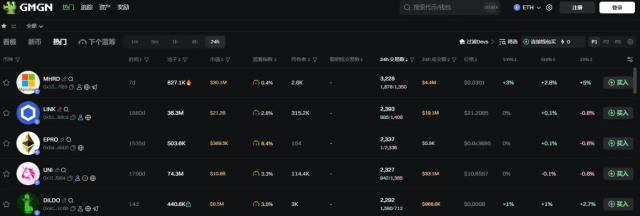"Stablecoin First Stock" Circle announced its latest layout in the Q2 financial report of 2025, with a blockchain called Arc, which is a Layer1 dedicated to stablecoins. It is clearly targeting competitors Tether's Plasma and Stable. Arc will launch its public testnet this fall, and let's take a look at the technical features of Circle's latest work.
First, Arc is an EVM-compatible Layer-1 blockchain designed specifically for stablecoin finance and asset tokenization, providing a foundational settlement layer for programmable money on the internet, particularly suitable for global payments, foreign exchange (FX), and capital market scenarios. The goal is to address obstacles encountered by existing public chains in enterprise and institutional applications, such as transaction fee volatility, settlement uncertainty, and lack of privacy. Here we know that Arc is closely related to payments, and notably, Arc seems not to be consumer-facing.
Main Technical Features of Arc
Using USDC as Native Gas and Stable Fee Mechanism
Arc uses USDC as the native asset for paying transaction fees (gas) and adopts a fee market mechanism inspired by Ethereum's EIP-1559, but updates the base fee by using an exponential weighted moving average of block utilization, thereby smoothing short-term fluctuations and ensuring transaction costs remain consistently low.
In addition to USDC, Arc also plans to integrate support for gas fee payments for other stablecoins and tokenized fiat currencies through a dedicated "Paymaster" (a payment channel).
Extremely High Performance
Arc uses a high-performance consensus engine called "Malachite" based on the Tendermint BFT protocol. This enables deterministic settlement finality, with transactions confirmed and irreversible in less than a second.
Of course, there are validators, with the network secured by a limited, permissioned, and geographically distributed group of well-known institutions as validators. These validators' identities are public, and they must adhere to high standards of accountability and operational assurance. This easily reminds one of the former Libra.
In a test setup with 20 geographically distributed validator nodes, Arc can process about 3,000 transactions per second (TPS), with a finality confirmation time below 350 milliseconds. Using 4 validator nodes, throughput can exceed 10,000 TPS, with a finality time below 100 milliseconds.
Optional Privacy Protection Features
Arc's privacy roadmap begins with a "confidential transfer" feature that can encrypt transaction amounts, making them invisible to the public, while the addresses of both transaction parties remain visible. This is a very business-oriented function that protects commercially sensitive information.
Another point is entirely for regulatory purposes: Arc's privacy model allows for selective disclosure through mechanisms like "view keys", similar to Monero, because many transactions have privacy, but can authorize third parties (such as audit or regulatory agencies) to access specific transaction data. Institutions can always fully view their customers' transactions to meet regulatory requirements such as transaction monitoring and travel rules.
Privacy features are implemented through a modular backend, initially using Trusted Execution Environment (TEE) technology to handle encrypted data, with future plans to integrate more advanced technologies like Multi-Party Computation (MPC), Fully Homomorphic Encryption (FHE), and zero-knowledge proofs.
MEV Mitigation Roadmap
Arc believes not all MEV is harmful. It categorizes MEV into "constructive" (such as arbitrage that helps stablecoin price discovery) and "harmful" (such as sandwich attacks).
To mitigate MEV issues, Arc's roadmap includes implementing encrypted mempool, batch transaction processing, and multiple proposers to suppress predatory trading behaviors while preserving beneficial arbitrage activities.
Click to learn about ChainCatcher's job openings
Recommended Reading:







